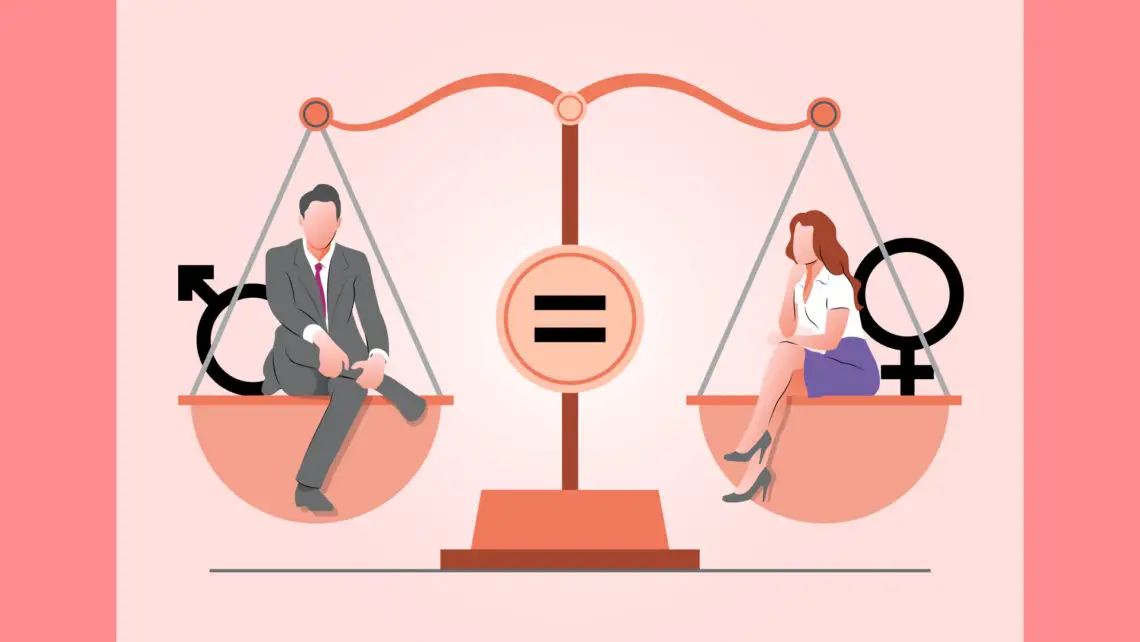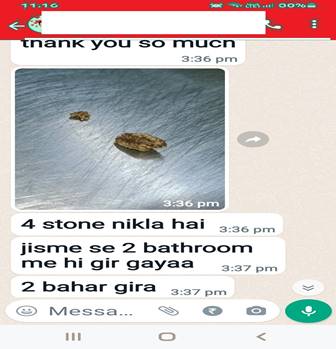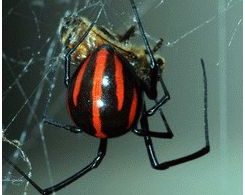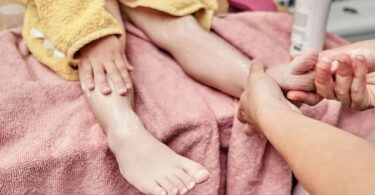Homeopathy, an exquisite system of medicine, endeavors to uproot the afflictions of the patient. Our approach extends beyond the treatment of mere presenting symptoms; we profess to eradicate the inherent predisposition towards a specific malady.
Consequently, when a patient seeks our aid during an acute state, we typically prescribe a remedy suited to the immediacy of their condition. Once the acute episode subsides, we reassess the case, aiming to prescribe a more profound remedy alongside a select few remedies we deem as anti-miasmatic, all-in pursuit of permanently eradicating the ailment.
However, it must be noted that while we are expected to treat the patient in their entirety, many individuals consult us solely during acute episodes and then vanish as if into the ether, only reappearing in moments of urgency or when similar maladies befall them. This disparity between theory and practice is evident: in theory, we ought to address the holistic nature of the individual, yet in practice, we are often summoned solely for acute conditions.
Allow me to recount a case dating back to 2013 involving Mr. GM, a 20-year-old gentleman who typically reaches out to me during bouts of excruciating pain caused by renal calculi. This torment has persisted for a decade, each time resulting in hydronephrosis and doctors urgently recommending surgical intervention.
In his desperation, he approached us after attempting various conventional medicines and over the counter homoeopathic ones such as Berberis vulgaris, Colocynth, Sarsaparilla, and Lycopodium. [Engaging in self-medication is a perilous game indeed.]
The presenting symptoms of Mr. GM’s case were as follows:
The presence of calculi lodged within the left ureter.
Hydronephrosis
Agonizing labour- like pain in the kidney region and urethra, radiating in all directions imaginable. The pain extends to the thighs, legs, groin, even buttocks and chest.
Pain flying unpredictably, like a wayward bird, intermittently to the glans penis.
A profound sense of weakness, dullness, and exhaustion.
Although these symptoms are often encountered in cases of acute ureteric colic, they take on heightened significance in Mr. GM’s situation [ due to their high intensity]. After meticulous repertorization of the available data, an unusual remedy emerged.
Caulophyllum, a remedy traditionally considered to be specific to women, has been taught for over a hundred years as a remedy exclusively for women. However, is this a correct choice when there are several other remedies commonly used and therapeutically indicated for calculi and colic?
This question prompted me to recall a passage from Hahnemann’s Organon, where he discusses “favourite remedies” [Aphorism No. 257]. The message from the master is clear: we must believe in the totality and avoid favouritism towards any particular remedy.
Upon reflection, it became evident that the patient had already tried all the favourite remedies traditionally used for calculi and colic, remedies that are embraced by nearly 90% of homeopaths worldwide. I, like many other practitioners, have a cabinet in my clinic where I keep a collection of cherished possessions: the calculi expelled by patients.
Inside this there are over 120 carefully numbered and labelled calcium stones, each package bearing the patient’s signature, along with the date and time of expulsion [ collected over 23 years]. However, it is noteworthy that the remedy Caulophyllum had never even crossed my mind in all those cases.
In light of this realization, I resolved to prioritize the symptoms over adhering to the conventional, favoured route. I prescribed Caulophyllum 200C, administering it every two hours until the symptoms subsided. To my astonishment and delight, the following evening, the patient returned to my clinic clutching a small bottle containing four renal calculi. This outcome brought about an equal sense of surprise and liberation within me.
Indeed, it is essential to contemplate the biases that persist when we label remedies as “male” or “female” within the realm of homeopathy. Homeopathic medicines can be perceived as energy- fields capable of healing the afflicted and inducing similar functional symptoms in healthy individuals. The classification of remedies as male or female is primarily observed within academic settings, where instructors aim to elucidate organ affinity and the pathogenetic actions of specific remedies to their students. It also finds practical relevance when choosing a remedy based on organ affinity.
The same patient visits me every two or three years with similar symptomatology and disappears in between, once the stones come out, promising me to visit the next day for the chronic prescription. On some other occasions, I have used Berb vulgaris as a complementary remedy that belongs to the same family. In theory,
I should prescribe his supposed constitutional remedy once the episode is over, along with a possible anti-miasmatic treatment. However, some patients tend to act in haste only during emergencies, as the saying goes, “A leopard never changes its spots.” And patients are just patients, one never stops helping them.
Granted, certain remedies do exhibit affinities for specific organs, and there are discernible tendencies as well. However, in today’s evolving world, where concepts of gender identity are continuously evolving and being redefined, we must question the accuracy of categorizing remedies as exclusively male or female. It becomes imperative to reassess the validity and relevance of such gender-associated notions in our practice.
By expanding our understanding and embracing the fluidity of gender identity, we can avoid perpetuating stereotypes and biases within homeopathy. Our focus should lie in recognizing the individuality and unique health needs of each patient, rather than adhering rigidly to outdated gender classifications. Such a shift will allow us to approach remedies with an open mind, ensuring comprehensive and personalized treatment for all individuals, irrespective of their gender identity.
Indeed, our case records now bear witness to the presence of female Lycopodiums and Nux Vomicas, as well as male Ignatias. However, traditionally, Caulophyllum has been associated with its action on the rigid os, and it is mentioned in various homeopathy and scientific literature as a remedy with an affinity for female organs. It would be beneficial to delve deeper into the study of this remedy through reputable sources to expand our understanding.
Exploring the sources will allow us to gain comprehensive insights into Caulophyllum’s characteristics, indications, and therapeutic potential beyond its conventional association. By studying its materia medica, clinical experiences, and provings, we can broaden our understanding of its broader applicability and encompass its diverse manifestations in both male and female patients.
Let’s study the remedy together.
Caulophyllum, a remedy belonging to the Berberidaceae family, shares its botanical lineage with remedies such as Berberis vulgaris and Podophyllum. This American plant thrives in the woodland valleys of Eastern North America, stretching from Manitoba to Alabama.
The term “Cohosh” derives from the Algonquin language, suggesting a sense of roughness. Interestingly, there are two remedies known as Cohosh in homeopathy. The other one is Actea Racemosa from the Buttercup family. Both remedies have proven valuable in addressing complaints related to female reproductive organs, particularly during labor.
Traditionally, native populations utilized Caulophyllum as a uterine tonic and to alleviate genitourinary issues in both genders. Dr. M. L. Tyler, in her exploration of Caulophyllum’s drug picture, recounts Dr. Clark’s insights into remedies from the New World.
Interactions of the homoeopathic doctors and eclectic physicians with indigenous communities revealed the adaptability of these remedies to homeopathic settings. According to Dr. Borland’s case description, he successfully treated a woman during her labor using Caulophyllum.
Intriguingly, he also remembered administering Caulophyllum to the woman’s own mother during her pregnancy, with positive outcomes attributed to Dr. Borland’s expertise. Dr. Burt, the prover of Caulophyllum, places particular emphasis on its uterine action.
Nash, in agreement with the stalwarts of homeopathy, affirms the remedy’s action on womanhood. However, he emphasizes the importance of reproving and verifying its utility in practice by considering it when the symptoms align, rather than relying solely on our preconceived notions, illustrating cases of small joint arthritis successfully treated with the remedy.
Caulophyllum shares a close resemblance to Berberis vulgaris, and interestingly, I have discovered that they complement each other as homoeopathic remedies..
Here is a difference in symptomatology.
| Remedy | Berb vulgaris | Caulophyllum |
| Location | Liver, kidney, abdomen, ureter | , kidney, uterus bladder, internal os |
| Side affinity | Predominantly left sided | Left and right |
| Type pf pain | Stitching, cutting pain radiating from one point shooting all over | Labour like pains, shifting flying from abdomen to chest, erratic |
| Sensation in part | Bubbling, gurgling, numbness, burning, soreness | Rigidity, obstruction, congestion |
| Tongue, thirst | Slimy furred tongue, great thirst with dry mouth | Coated tongue great thirst |
| State of mind | Fretful, anxious or sometimes indifferent | Exhausted with pain, apprehensive |
Additionally, Caulophyllum exhibits similarities to Podophyllum in cases of gallstone colic or liver pain. In my own experience, Caulophyllum has proven invaluable in acute emergencies. I have administered this remedy for various colicky pains, including those associated with renal calculi, gallstones, indigestion, non-surgical intestinal obstructions, hiatus hernia, inguinal hernia, and hemorrhoids, if the symptomatology aligns with the remedy. Regardless of the origin, patients often describe the pain as resembling labour pains.
The characteristic pains of Caulophyllum are often labour-like, shifting, radiating, and traversing from the abdomen to the chest and other body parts. This symptom serves as a golden guide for prescribing this remedy. Patients often experience weakness, exhaustion, and a lack of strength to push. The pains are inefficient, intermittent, and indicative of atonicity in the affected area, failing to produce any desired result.
Additionally, joint pains, particularly in the finger joints (like Actea Racemosa in cases of excessive use of finger joints, such as typing), may also be present. While Caulophyllum may not be considered a constitutional remedy, certain symptoms are worth mentioning, such as fretfulness, irritability, and apprehension. As Kent describes, Caulophyllum exhibits chilliness akin to Pulsatilla, hysterical tendencies like Ignatia, and rheumatic weakness reminiscent of Actea Racemosa.
The important point is to ensure gender equality in life and homeopathic prescribing as well. The classification of remedies into male and female, although useful for beginners, should not be considered as we advance in our search for the similimum.
Lesser proven remedies with the potential to rise to the ranks of a constitutional remedy must not be overlooked, especially in acute cases where symptoms play a crucial role. I have successfully prescribed remedies like Sabina and Murex in male patients, achieving positive outcomes. However, that discussion is best saved for another time.
The totality of symptoms is key to prescription, as it reflects the internal malady. Unusual prescriptions like Caulophyllum can help us remove prejudices from our minds when witnessing positive results in conditions such as testicular swelling in infants, incarcerated flatus, hernias, and colic related to calculi.
One of my patients with lithiasis shared an interesting observation with me. He mentioned that during the painful process of passing gravel in his urine, he vividly remembered his wife’s state during labor. He drew a parallel between his own experience and the exact state of Caulophyllum in acute pain – feeling tired, weak, and exhausted, unable to endure the pain adequately, much like a primiparous woman.
I encourage the homeopathic community to consider using Caulophyllum beyond its conventional associations. If we can identify a similar state in a patient, irrespective of their gender or the specific pathology, there is a good chance of achieving positive results.
Let us explore the possibility of utilizing this remedy in different types of cases, expanding our understanding and offering effective treatment options. Together, we can continue to push the boundaries of our understanding about homeopathy and provide optimal care for our patients.
References
Allen, H. C., & Clarke, J. H. (1999). Prescriber to Allen’s Keynotes. B Jain.
Boericke, W., & Boericke, O. E. (1990). Homoeopathic materia medica with repertory comprising the characteristic and guiding symptoms of the remedies (R. B. Savage, Ed.; 2nd ed.). Homoeopathic Book Service.
Boger, C. M. (2003). Synoptic Key to Materia Medica. B Jain.
Chevallier, A. (2016). Encyclopedia of herbal medicine: 550 Herbs and remedies for common ailments. DK.
Farrington, E. A. (2010). A Clinical Materia Medica. Nabu Press.
Hahnemann, S. (2021). Organon of medicine: Sixth edition. B Jain.
Kent, J. T. (2000). Materia Medica of Homoeopathic Remedies: With New Remedies (3rd ed.). Homoeopathic Book Service.
Nash, E. B. (2021). Leaders in homoeopathic therapeutics: With grouping & classification: 6th edition. B Jain.
Phatak, S. R. (2022). Materia Medica of Homoeopathic Medicines: Revised Edition. B Jain.
Sherman, J. (1998). Indian tribes of north America. Todtri Book.
Tyler, M. L. (2022). Homoeopathic Drug Pictures. B Jain.








A wonderful article! Thank you so much for sharing your knowledge with us. It is a pleasure to know that there are still real homeopathic practitioners who both, practice Hahnemannian homeopathy and teach it too. I keep hoping that one day I would have enough time to write about Lycopodium females. I do believe there are just as many of them around as male ones but our old materia medicas fail to properly describe them, especially the girls who need Lyc. As an old fashioned feminist, I don’t believe in “gender fluidity” but I am all in for fairness. I hope, Dr Vaishampaya, that you will continue contributing to our shared knowledge as well as to your patients’ health and your students’ skills. Looking forward to more of your articles here.
Thank you Helen
Excellent case Dr V !
and the way you have contrasted and compared the two important remedies is superb.
Looking forward to reading more of your cases –
Thank you for your response